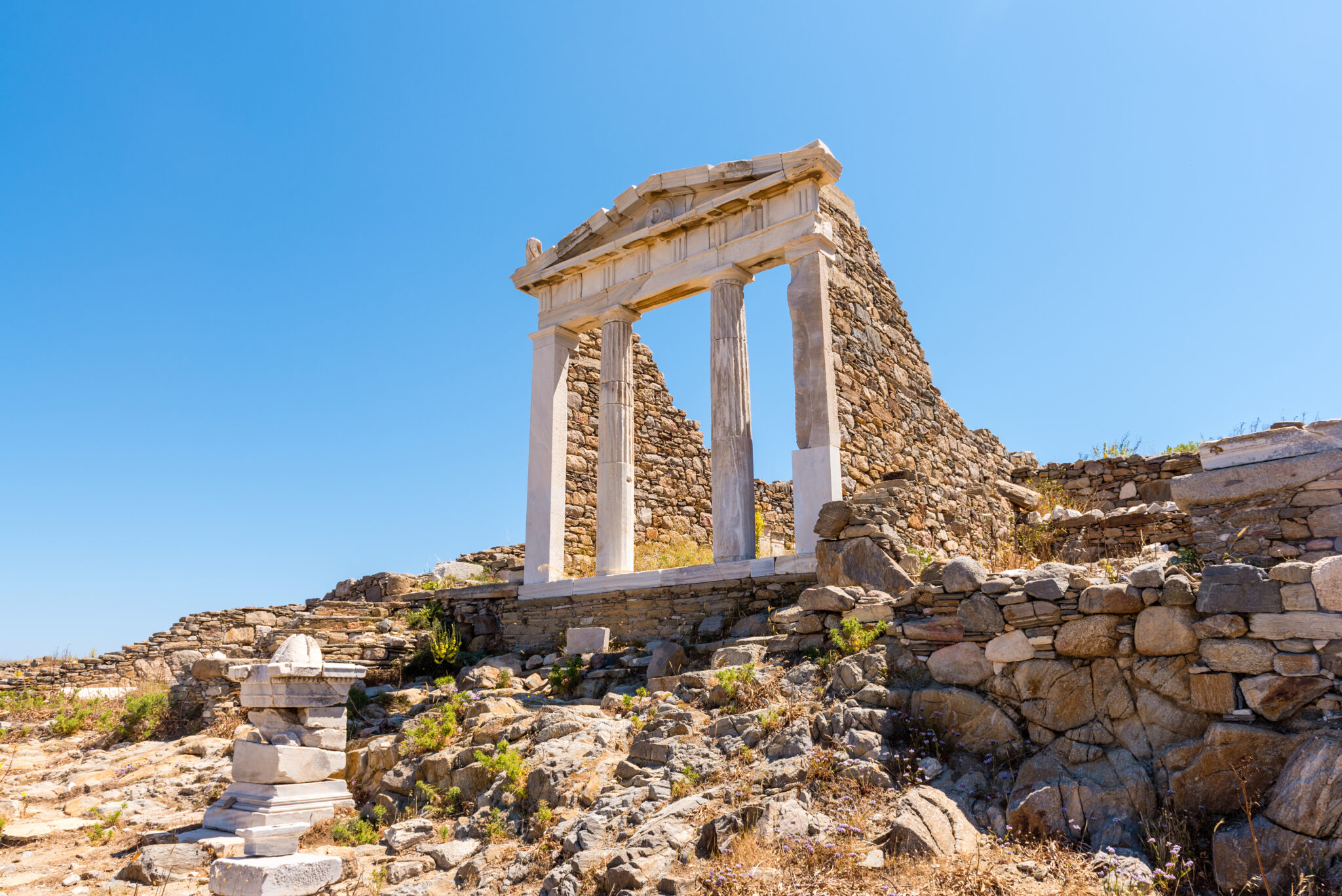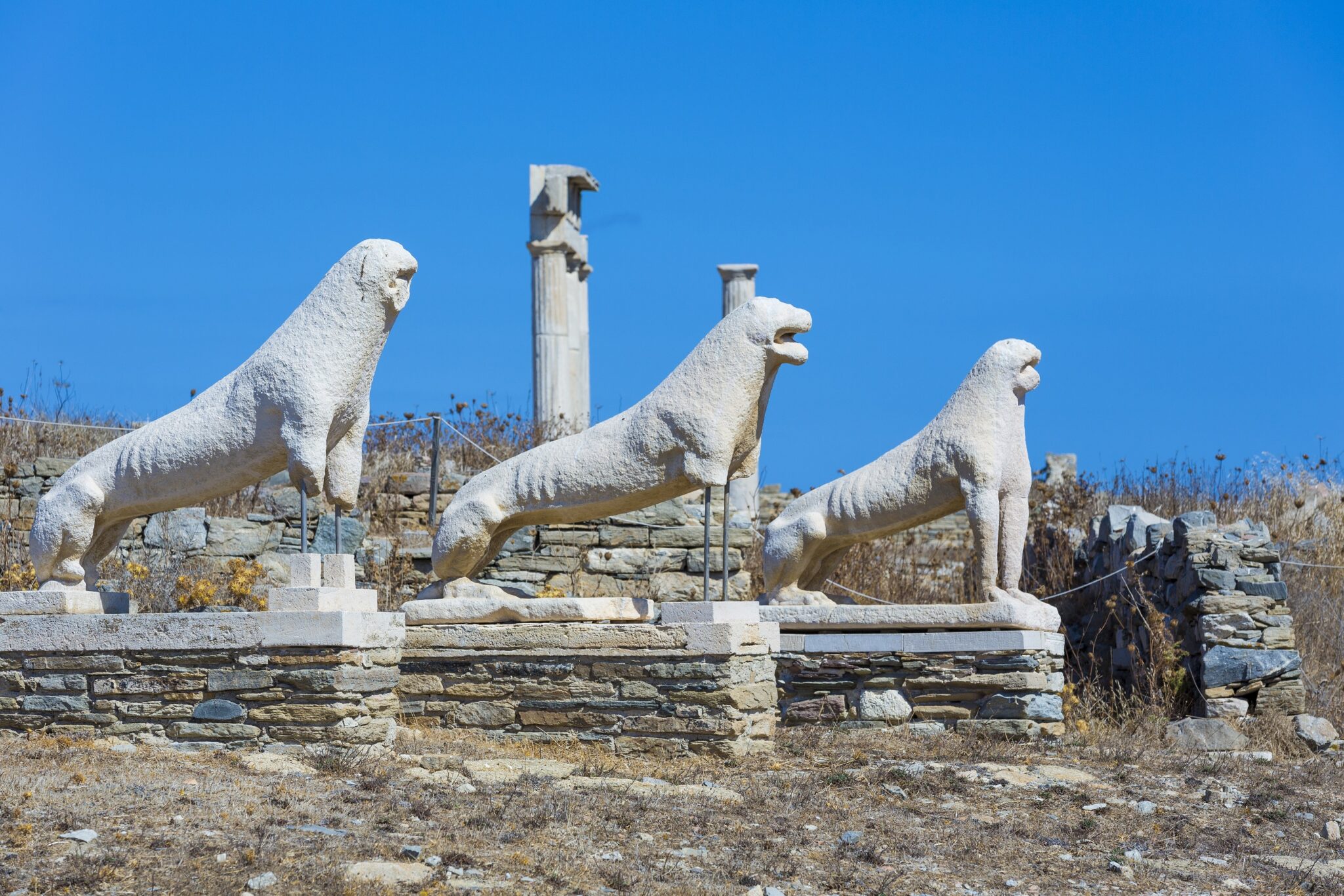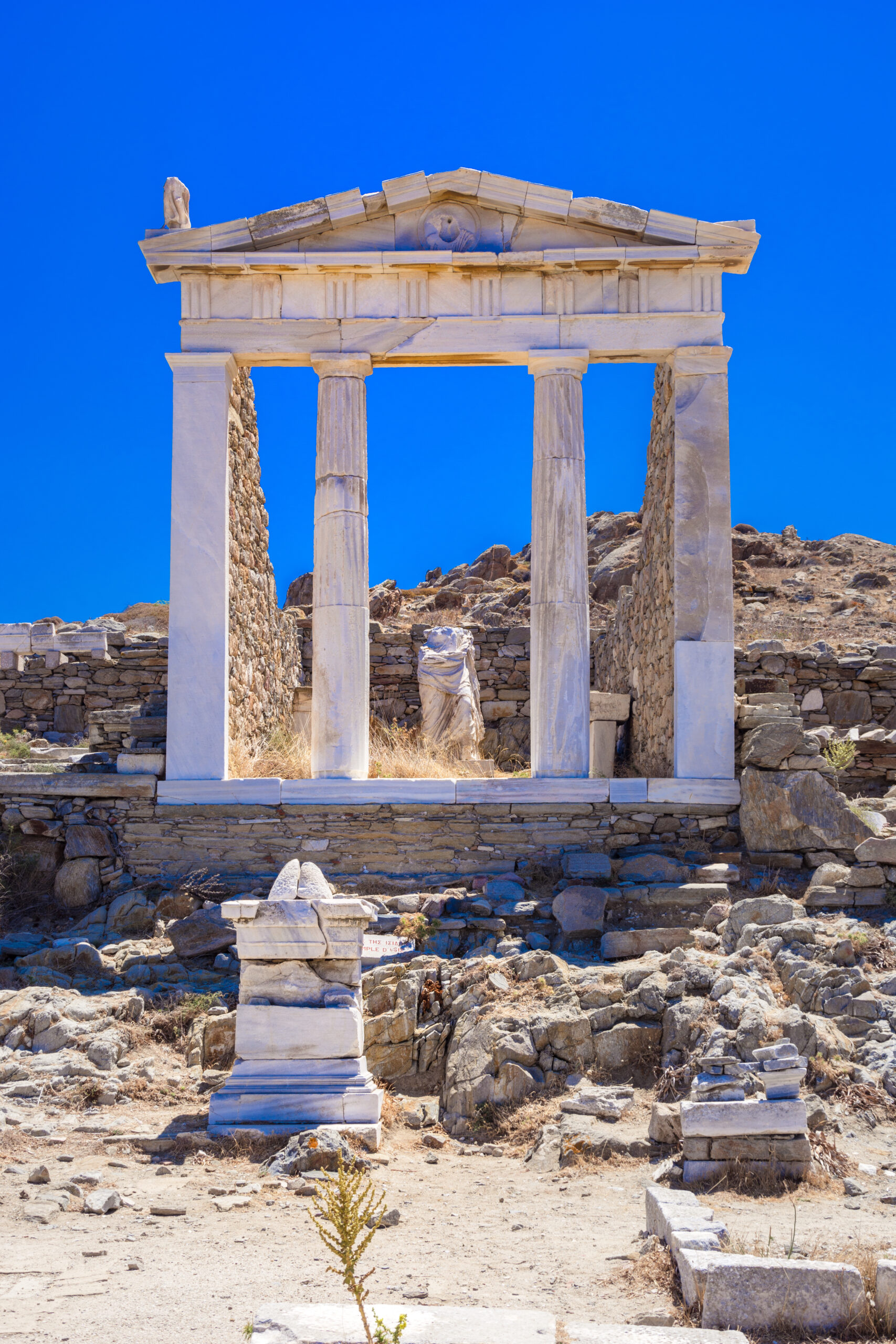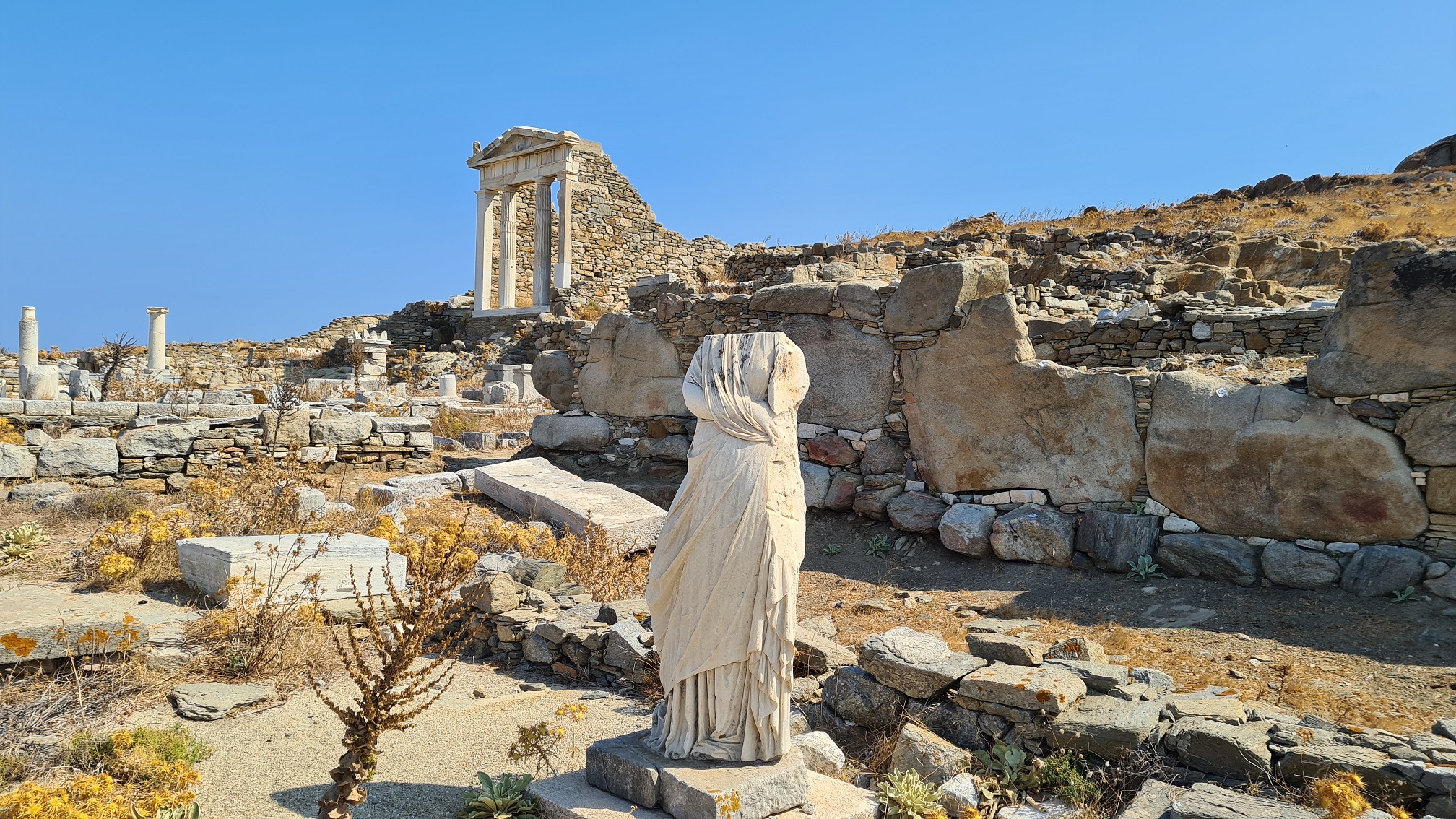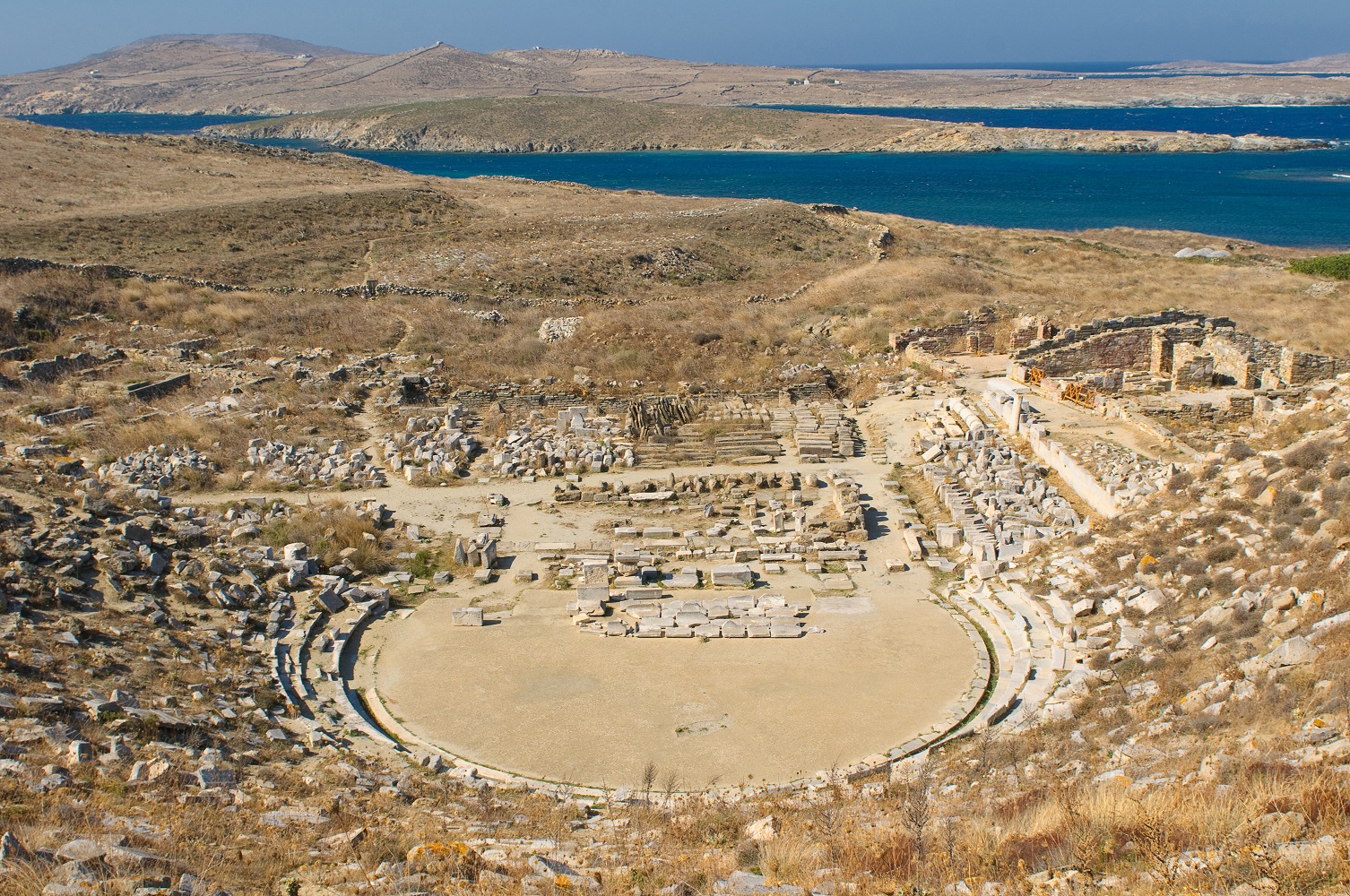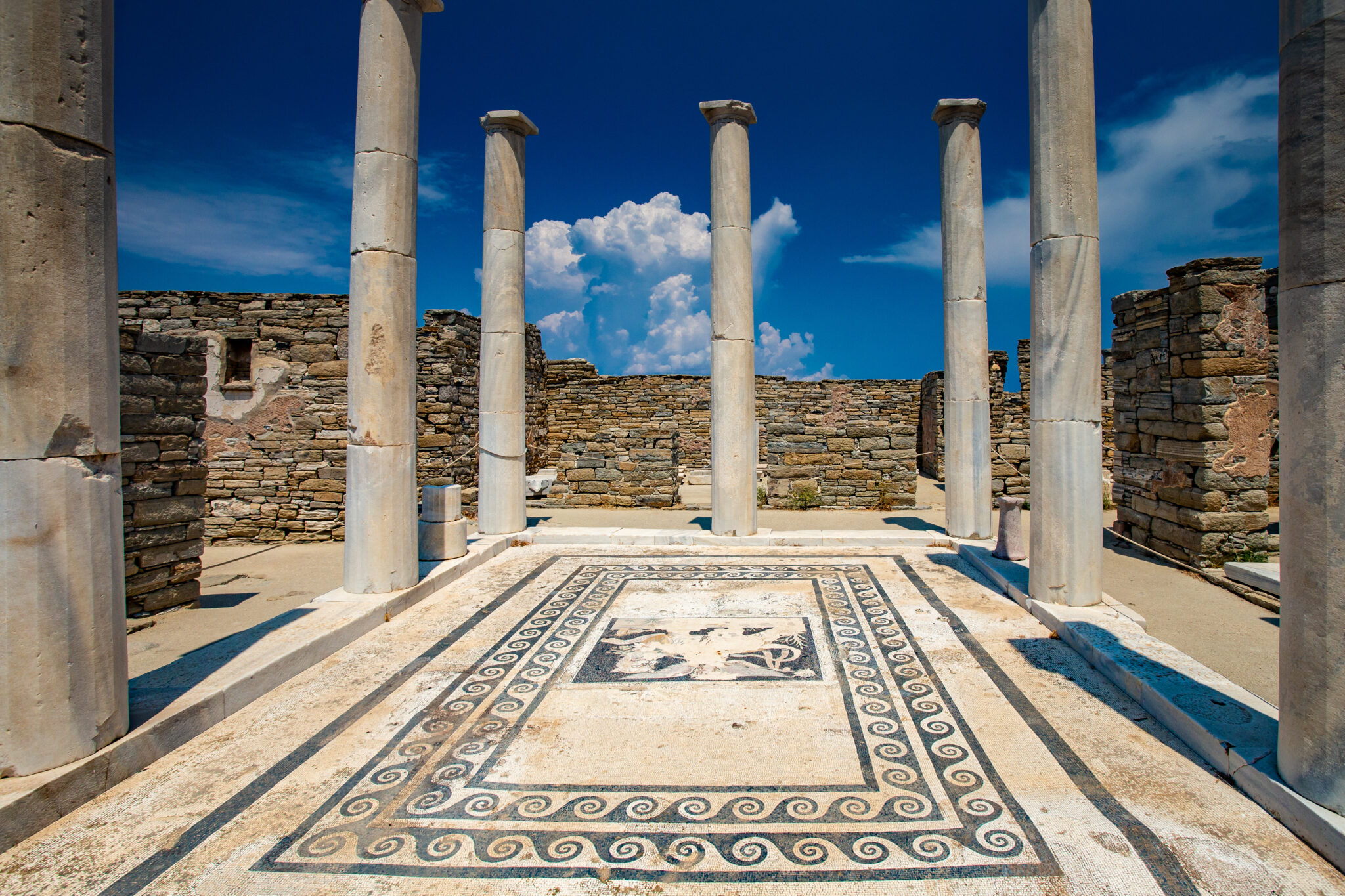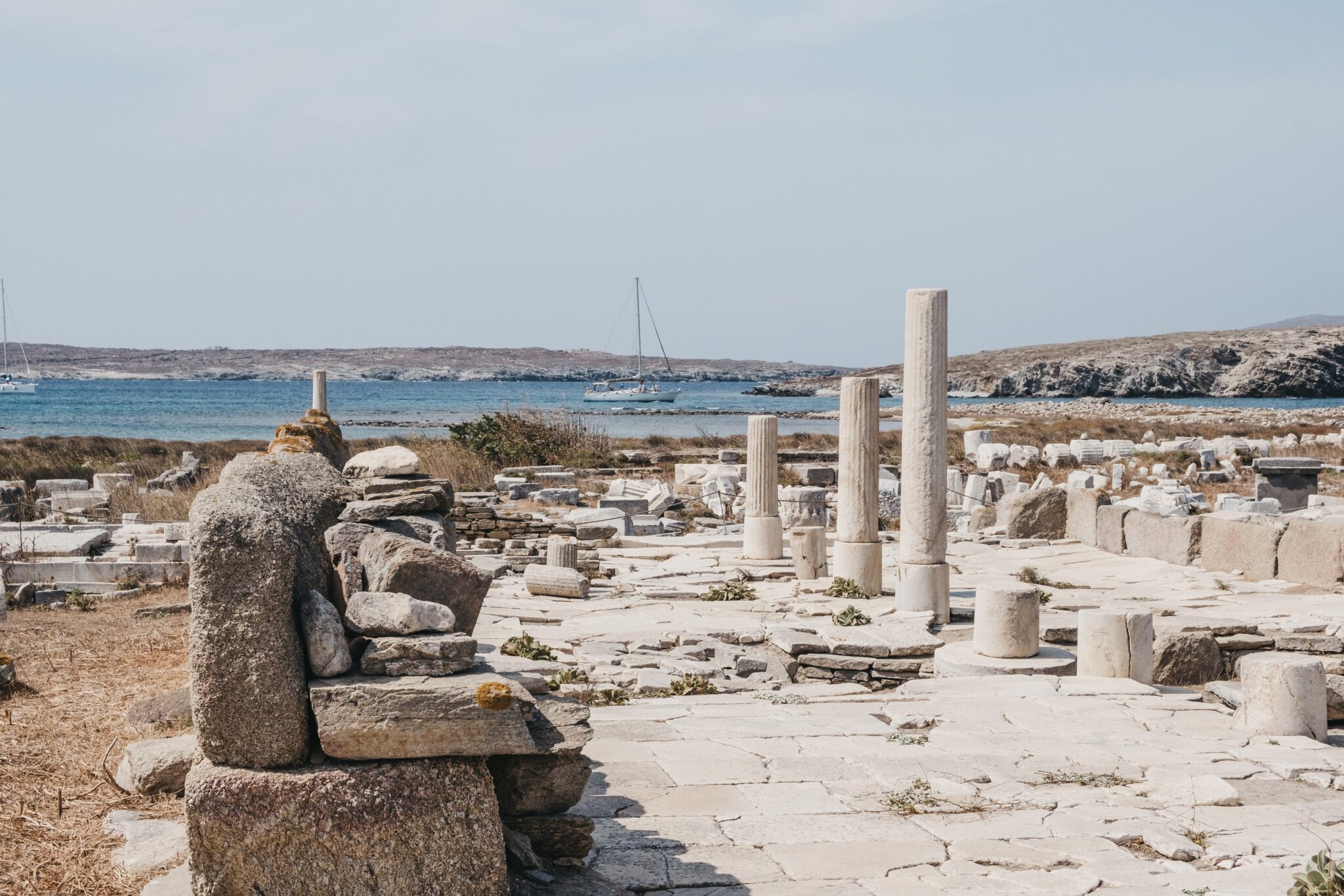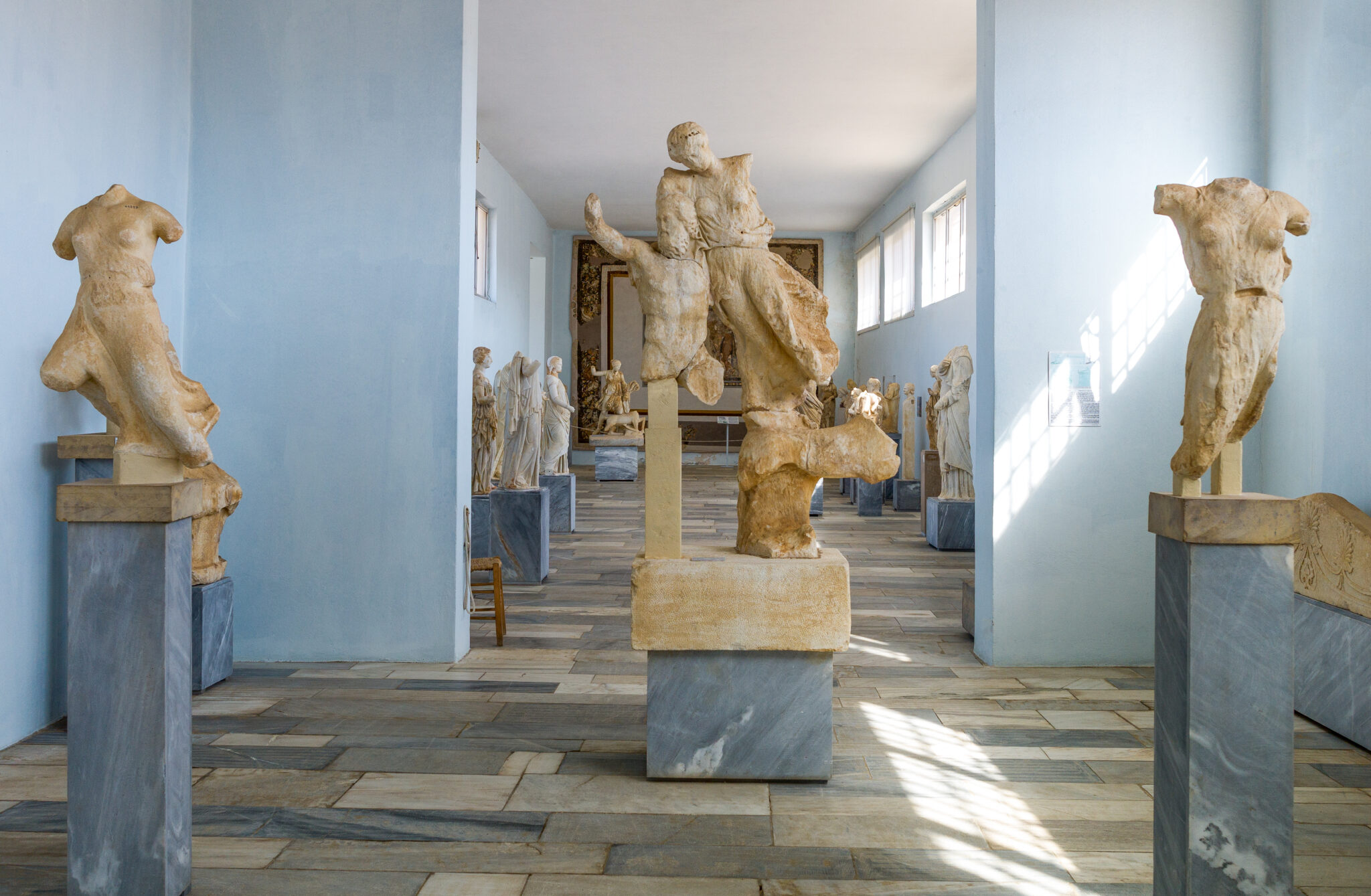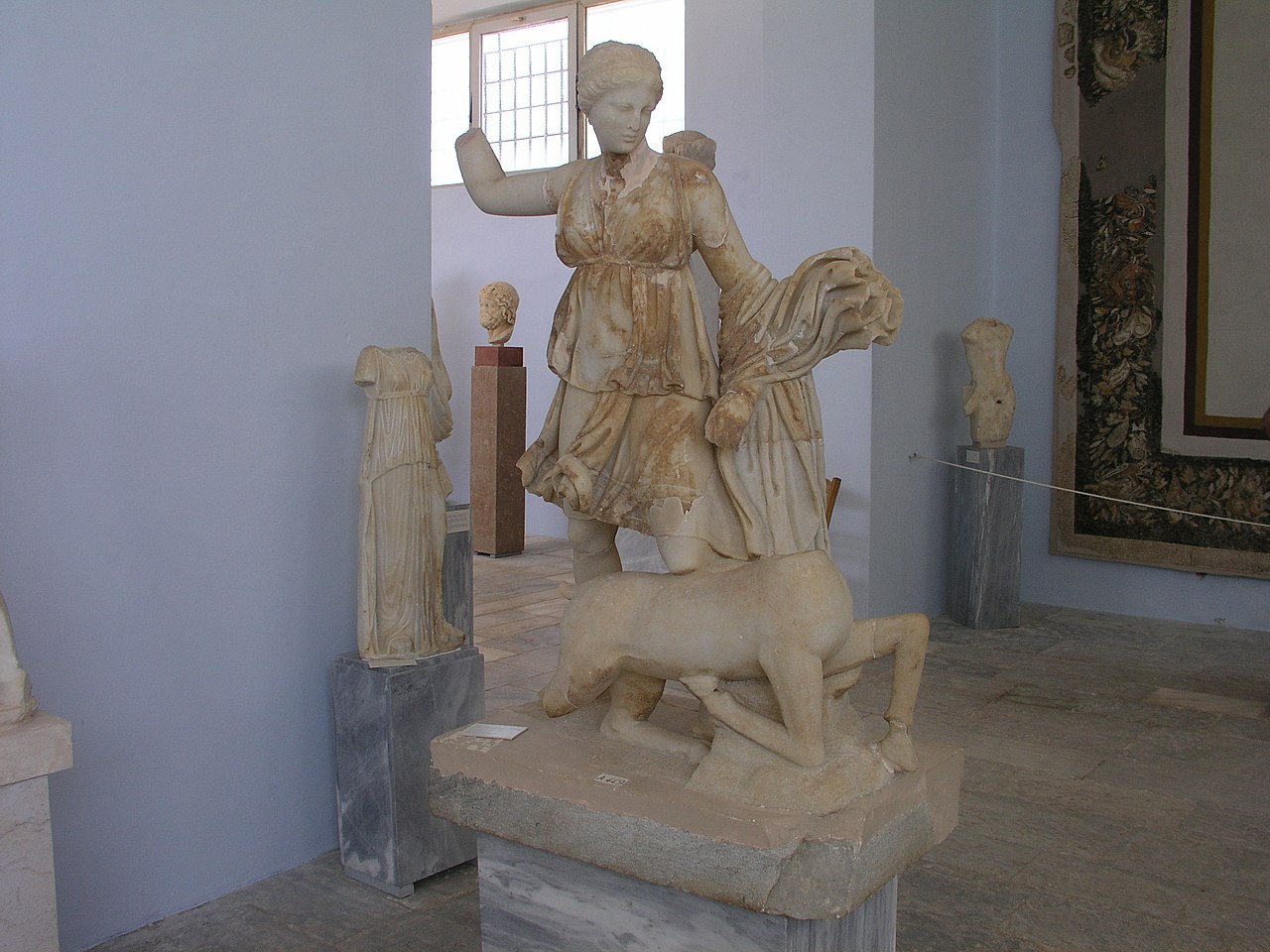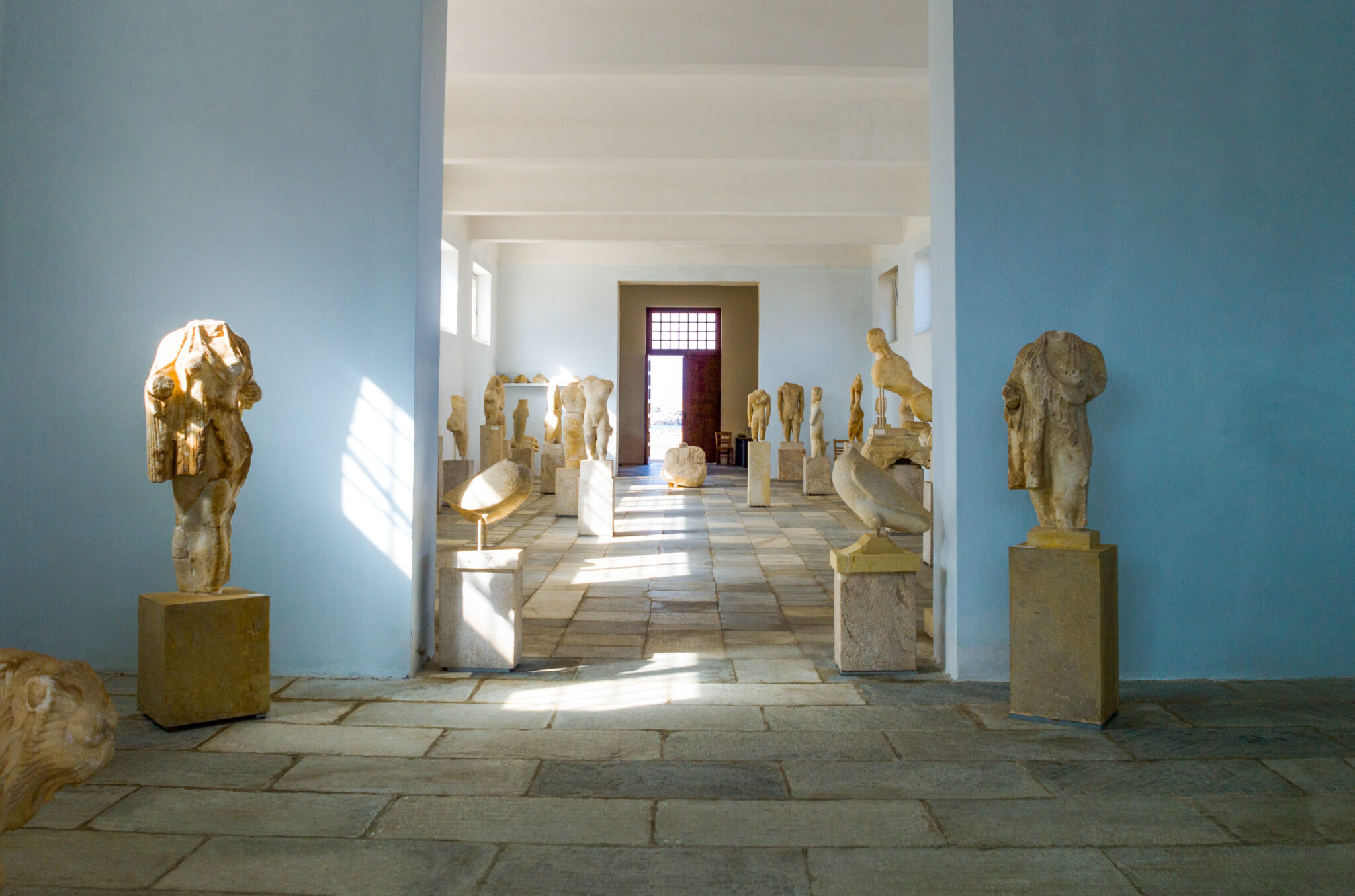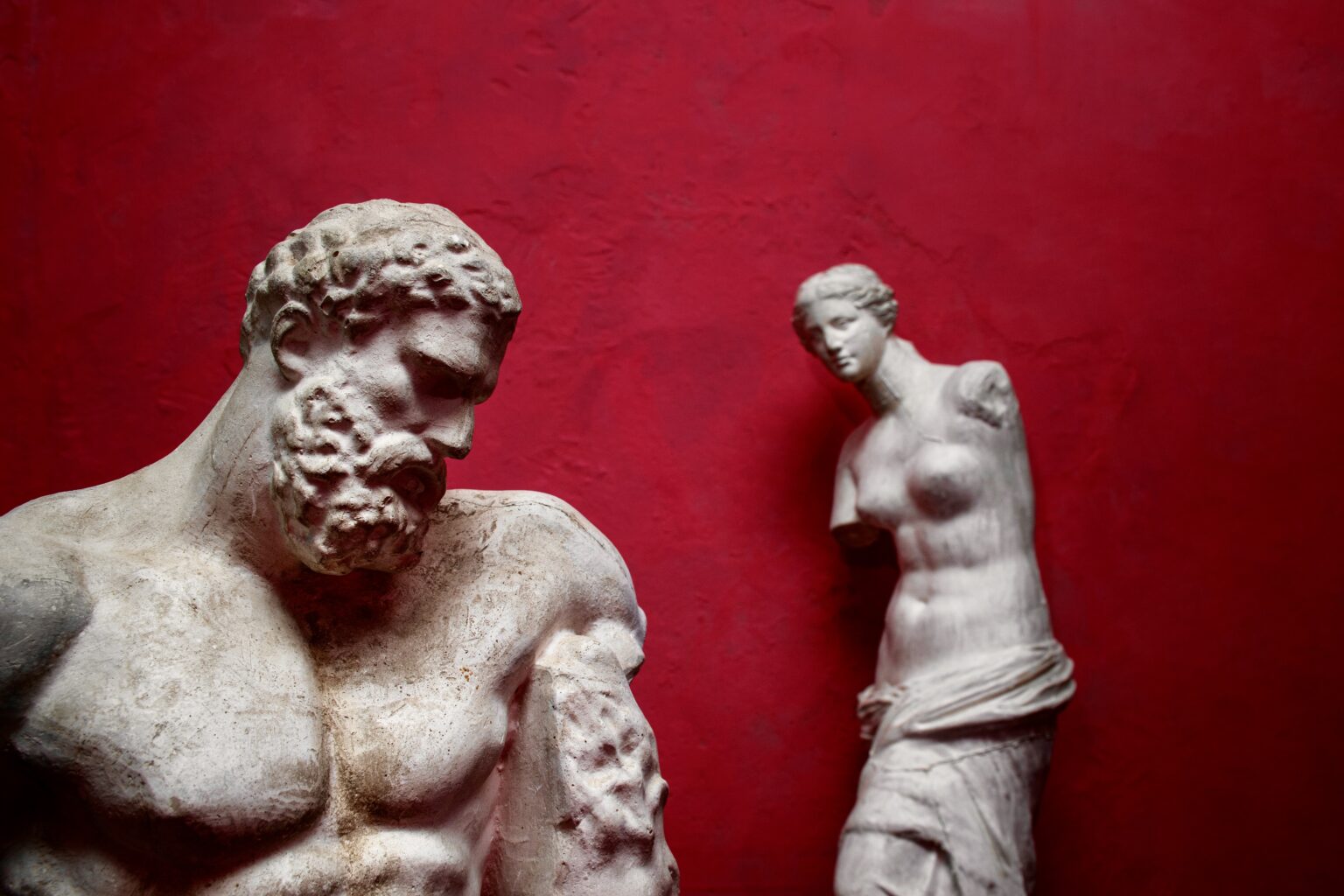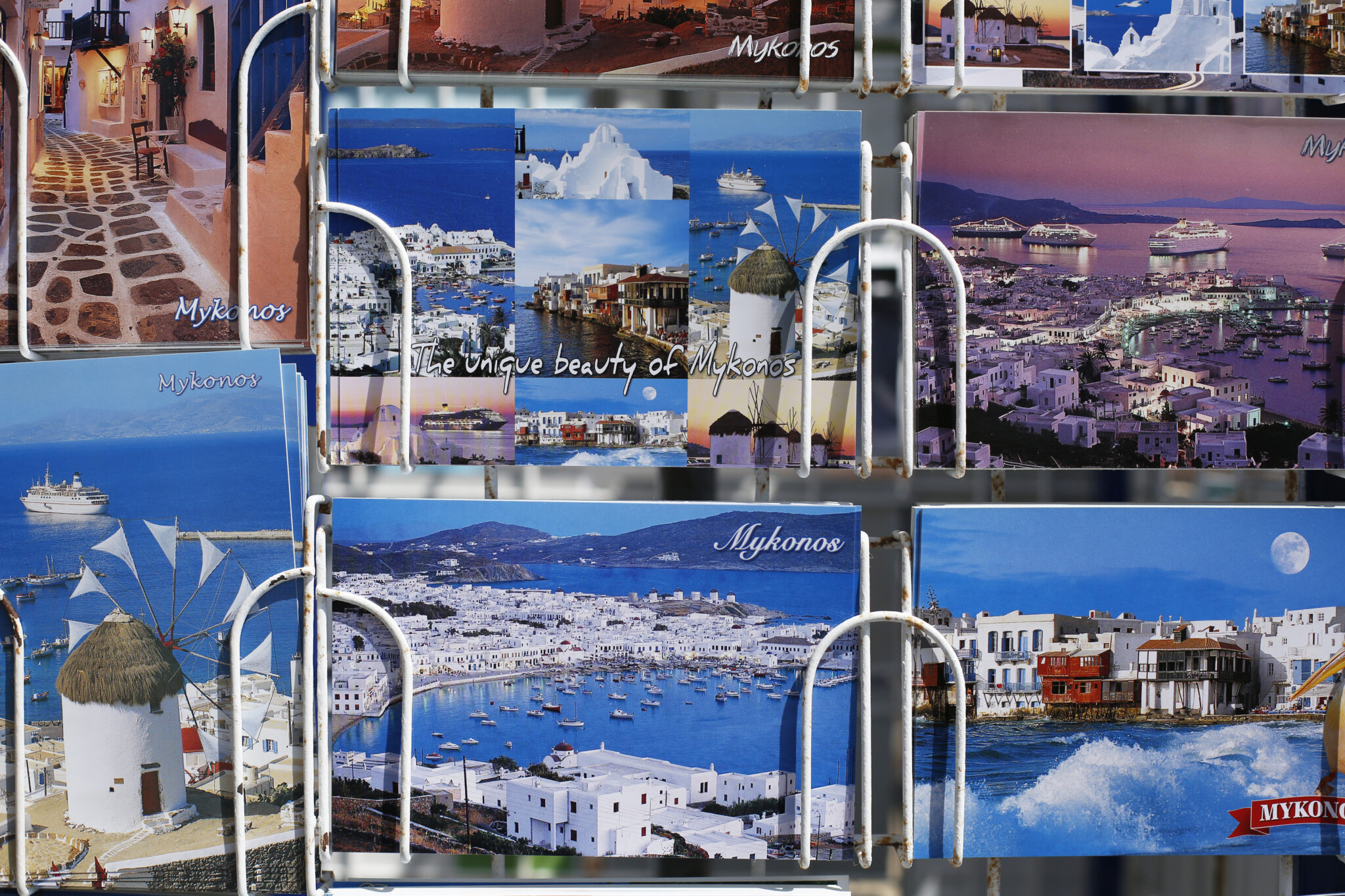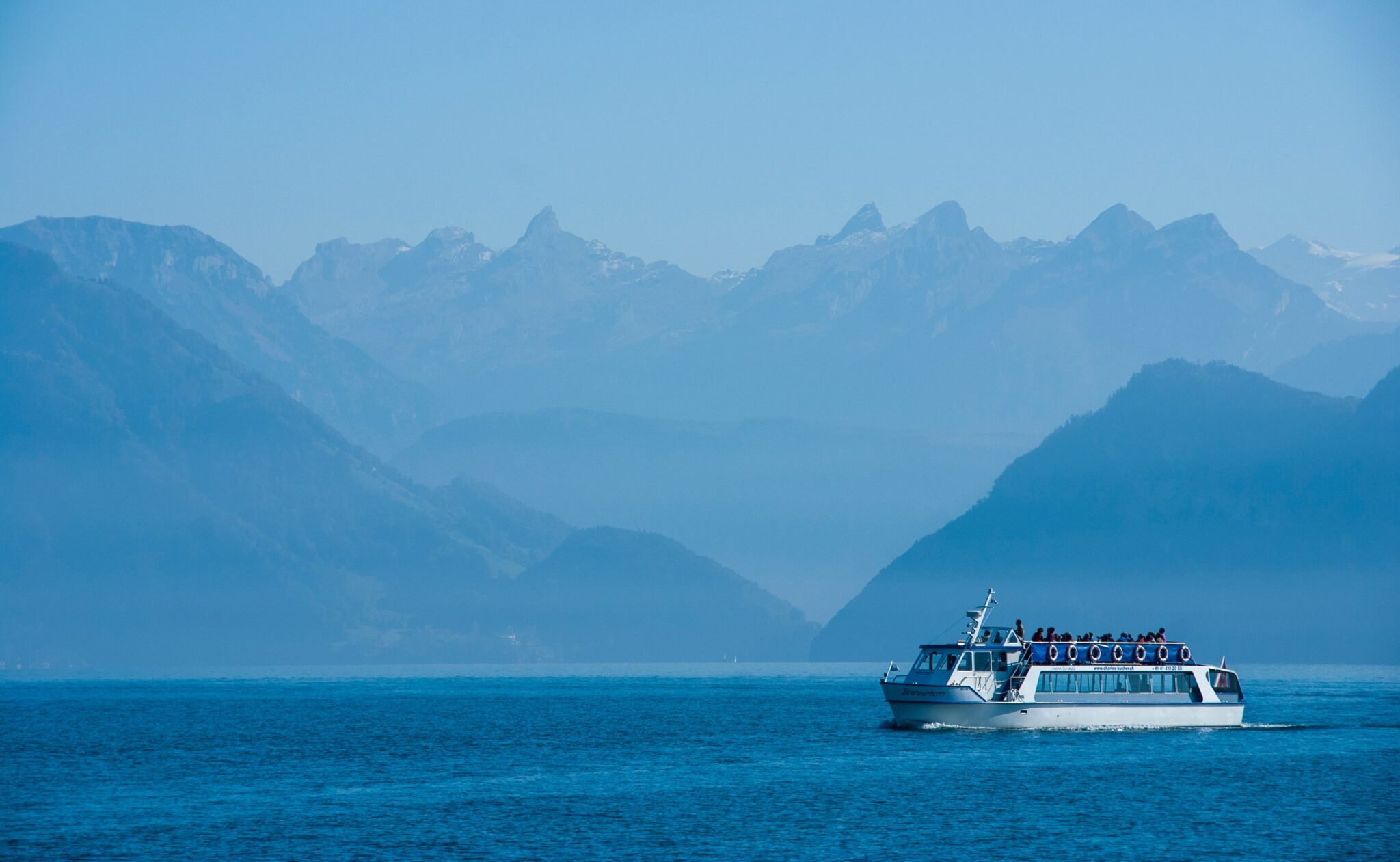Very close to Mykonos, but light years away from its modern cosmopolitanism, a tiny island carrying an enormous, century-old history. Delos, a place with magic vibes and bright light, is the largest archaeological site in Greece and one of the most important in the world. A very small piece of land in the middle of the Aegean, home to some of the greatest temples of the Mycenaean and Classic times.
Even though the island was already inhabited since the Prehistoric time, in the 16th century BC, when the first Mycenaeans moved to the island, it thrived as a religious and trading centre. At that time, Delos acquired a divine, magical dimension in the eyes of the people. It was the place of worship of god Apollo and goddess Artemis, who, according to the ancient myths, were born there, the twin children of Zeus and Leto. When Hera discovered that Leto was pregnant with Zeus, she forbid her to give birth to her children on land and under the sun. So, Leto, wandered around until she had to give birth. Then, according to the myth, a small islet emerged from the sea in the middle of nowhere, and Leto gave birth first to Artemis and then to Apollo. This myth probably explains the actual geological origin of the island, as researchers think that mythology follows true events. So, it’s quite possible that Delos emerged from the sea following a strong earthquake, and the people at the time felt the need to explain the phenomenon.
In the 5th century BC, while the island was already an important place of worship, the so-called Delian League was founded, based in Delos. Its main member was the city-state of Athens, but the common treasury was kept in Delos until 454 BC, something that shows the great economic and commercial power the island had. A few years later, during the Peloponnesian War, the Athenians decided to purify the island by forbidding the residents of Delos to give birth or die there, due to the divine status of the place. The power and energy of Leto, Apollo and Artemis had to remain untouched and intact with the enchanting location of Delos and the power of the white light spilling over the sparkling marble and the beautiful Classical sculptures simply adding to the intensity of the myth. The island being abandoned a few centuries later was not enough for Delos to be forgotten. In fact, the enormous historical interest that Delos has always generated in Europe and within the international jet set played a major factor in the great tourist development of Mykonos in the 1950s, 1960s and 1970s. The archaeological excavations carried out from 1873 until the mid-1970s, thanks to major sponsorships from European aristocrats, brought to light all the magic, all the great history along with hundreds of artistic and architectural masterpieces that eventually made the island a UNESCO World Heritage Site in 1990.
The archaeological site
The Avenue of the Lions
A tribute to the god Apollo, offered by the people of Naxos in the early 5th century BC, 16 marble lions adorned the road leading to the god’s sanctuary as the temple’s ultimate guardians and protectors. Of the total of 16 lions, only 5 survive intact to this day, as well as some parts of 4 others. Walking on the magnificent avenue that started at the ancient port of Skardanas and lead to the sanctuary of Apollo, you can see replicas of the sculptures, since the original lions are kept in the island’s Archaeological Museum. A trademark of the archaeological site, imposing and almost intimidating appearing to be ready to “fly” towards the sea, the lions of Apollo filled everyone with awe during the first excavations on the island. Their first photos became popular in the Press, that watched spellbound as one by one the treasures of Delos came to light, restoring a timelessly sacred place, beyond religious and social historical contexts.
The Temple of Isis
On an almost exclusively flat island, where the land’s surface seems to penetrate the Aegean Sea, the small, low hill of Cynthus stands out above the ancient ruins and the wreckage of a glorious civilization. There, at the highest point of Delos, stands in relatively good condition to this day the Doric Temple of Isis, in the Sanctuary of Egyptian Deities. The marble statue of the goddess, who was considered the patroness of sailors, the one who generously offered them health and good luck on their journeys at sea, is in a prominent place inside the temple.
The ancient theatre
Archaeological studies have proven that the first ancient theatre built in Delos was made of wood. In the 3rd century BC, however, the amphitheatrical structure was replaced by the impressive stone one that survives to this day. The ruins of the theatre show that the theatre was large, probably with 17 rows in total, which could accommodate up to 5,500 spectators. Most of the stands have been completely destroyed, but you can still see the lower tiers, the orchestra area and part of the stage.
The House of Dionysus
Perhaps the most characteristic example of a private residence in Delos, the House of Dionysus stands out from a distance thanks to its towering marble columns, which rise above the foundations of the ancient house.
An emblematic feature of the luxurious residence is the magnificent mosaic on the floor where the reception room probably was. It depicts the god Dionysus with open wings, riding a tiger. A wreath of grapes can be discerned around the animal’s neck, a trademark of the god of wine and festivity. The beautiful mosaic remains in a particularly good condition: the details of the god’s and the tiger’s figures are visible, as are some parts in which the original colours have been preserved intact.
On the island, one can see the ruins of several other private houses with impressive mosaic artwork, each of them depicting a different deity.
The sanctuaries of Apollo and Artemis
An important figure in the religious life of Delos, Artemis, one of the most interesting and complex figures of the 12 Olympian Gods, was worshipped with great passion on the small Cycladic island with an imposing sanctuary dedicated to her in Archaic times. In the 3rd century BC, the Delians kept the island’s treasury inside the temple of the goddess, while about a century later, the sanctuary was replaced by a new Ionic building, which surrounded the original temple.
Through the centuries, the constant expansions of the sanctuary of Apollo resulted in the sanctuary of Artemis (also known as Artemisio) looking like a small section within the huge temple of the great god of Delos, which during the Hellenistic period spanned about 20,000m². In an incredibly captivating location on the sea front, in the western part of the island, the construction of the temple began in the 5th century BC by the Athenians as a symbol of the Delian League but was not completed until the 3rd century BC. It is essentially a cluster of three different sanctuaries which form a truly great temple built at different phases of ancient history. According to archaeologists, the construction of the third sanctuary must be attributed to Callicrates, a close associate of Ictinus, both of them the architects of the Parthenon.
Today only a small part of the temple remains standing, but we know for sure that in the front part of the temple there was an oversized statue of the god, parts of which, like parts of the pelvis and torso, are lying on the ground. One of the legs of the statue is housed in the British Museum.
On your tour of the archaeological site of Delos, it is of particular interest to stop at the site of the ancient market, and at the ancient stadium where important artistic and athletic competitions were held every year.
The archaeological museum
This is one of the oldest museums in the Cyclades and one of the most important archaeological museums in the country. The archaeological museum of Delos opened its doors for the first time in 1904 and includes important exhibits that were found on the island during the excavations that took place in the second half of the 19th century and the first half of the 20th century.
Small everyday objects found in the ruins of private houses, wonderful sculptures dating back to the late Hellenistic and Roman times, vases from the Prehistoric period of the island, as well as several findings found on nearby Rinia.
Among the hundreds of exhibits of the museum, a magnificent marble sculpture depicting the abduction of Princess Orithyia by Boreas stands out, as well as a beautiful statue of Artemis on her sacred stag, and the 5 original lions that stood proudly on Lion Avenue in front of the sanctuary of Apollo.
The museum’s collection also includes mosaics made from scratch with pieces found scattered in the ruins of the archaeological site. Many have survived in very good condition and are accompanied by valuable information regarding the way they were made, as well as some interesting historical hypotheses about their origin and the building in which they were found.
The Delos Archaeological Museum is currently closed due to construction works and is about to move to a new modern building which will bring the exhibits closer to their surroundings.
How to get there
The simplest way to get to Delos is from Mykonos. From the island’s port, during the summer, there are regular daily boats, and the trip is less than half an hour. From December on, there are only two boats a week given that the weather allows it.
In addition, in the summer there are boats leaving for Delos from Tinos, Naxos and Paros. They usually also make a stop in Mykonos, and the small island of Rinia, since swimming is not permitted of the coast of Delos.
Read also:



